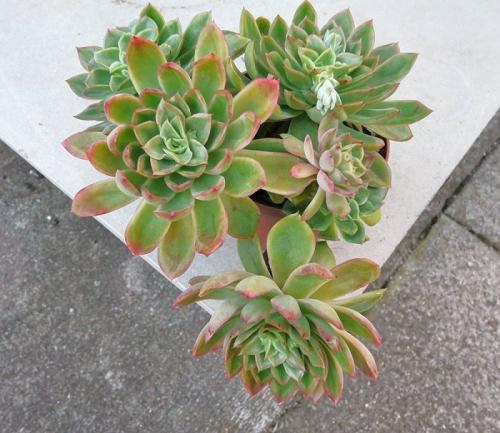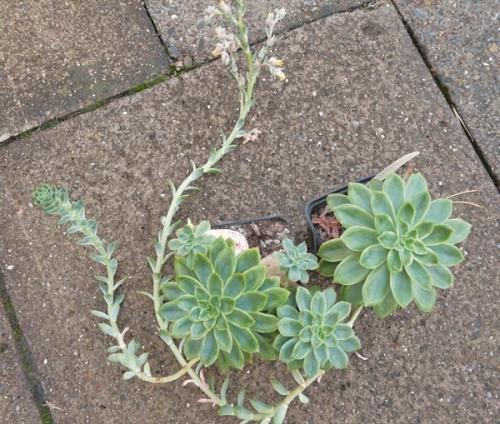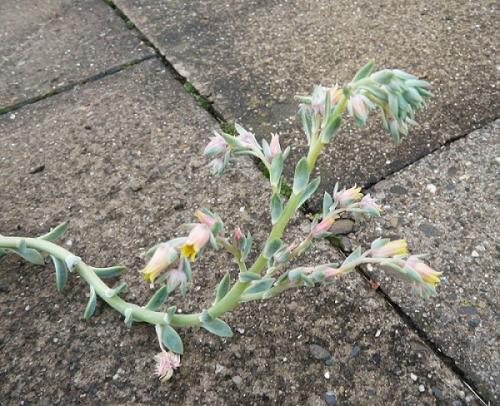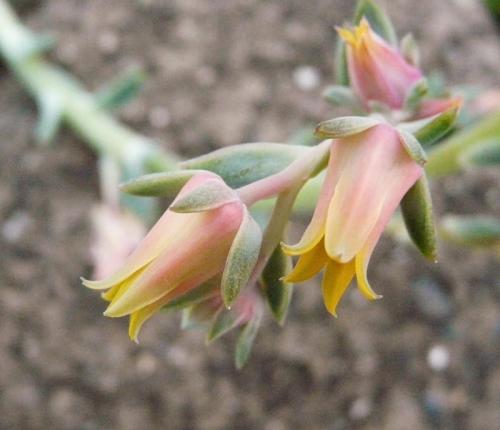Seerose
Description of a 2 ½ years old plant:
Stem upright, 4 cm high, 1,2 cm in diameter, with aerial roots; greenish brown; offsets from the stem.
Rosette 11 cm in diameter, 4,5 cm high, compact, about 40 leaves
.
Leaves 5,5 cm long, 1,7 cm wide and 0,3 cm thick, oblanceolate, cuspidate, slightly mucronate; upper side slightly concave, underside slightly convex and faintly keeled; colour grayish green, translucent margins.
Inflorescences 1 – 2 per plant, peduncle 70 cm long, 0,5 cm in diameter, branched at the top, at least 4 flowers per branch, colour light grayish green; bracts numerous, persistent, regularly spaced, 2,3 cm long, 1 cm wide ( 0,6 cm wide at base), 0,3 cm thick; acute, fleshy, same colour as leaves, margins also somewhat translucent ; bracteoles 1,3 cm long; pedicels up to 0,5 cm long.
Flowers: Corolla 7 mm in diameter at base and 3 mm at tips, pentagonal. Sepals very unequal, not united at base, 3 – 8 mm long, up to 3,5 mm wide, spreading, colour same as leaves and also margins somewhat translucent. Petals 11 mm long, 3 mm wide, keeled, tips only slightly spreading; colour outside pinkish at base to yellow at tips, inside greenish yellow. Carpel whitish yellow, style green, filaments whitish yellow.
Note :
1. The origin of this plant is unknown. If is sold as Echeveria byrnesii or E. secunda ‘Byrnesii’ – but it certainly is not this species.
2. The plant is variable in so far as inflorescences may be long and pendent-decumbent as well as short and fairly upright. It has first been classified as a xCremneria, but it is more likely to be simply an Echeveria hybrid.
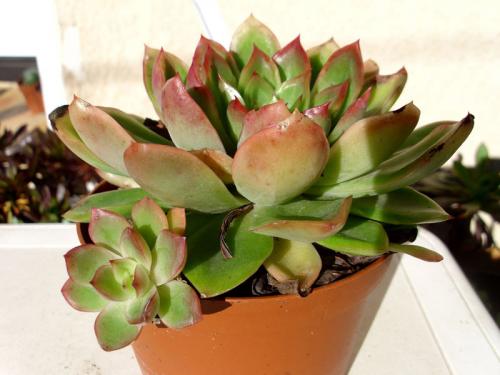
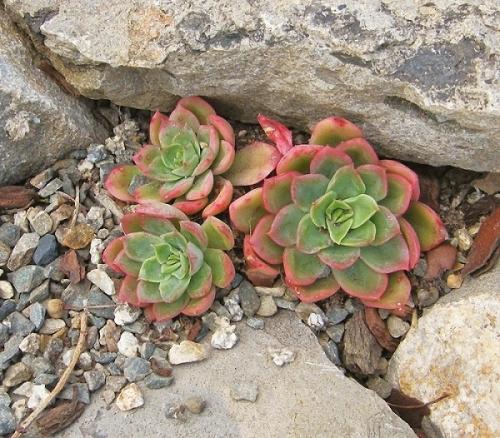
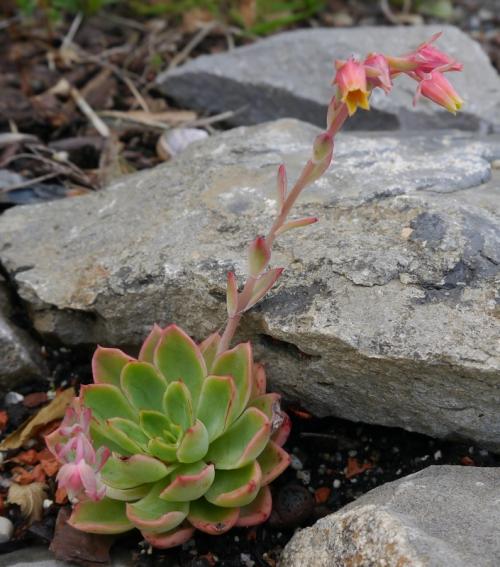
Photo Emmanuelle Aubé
